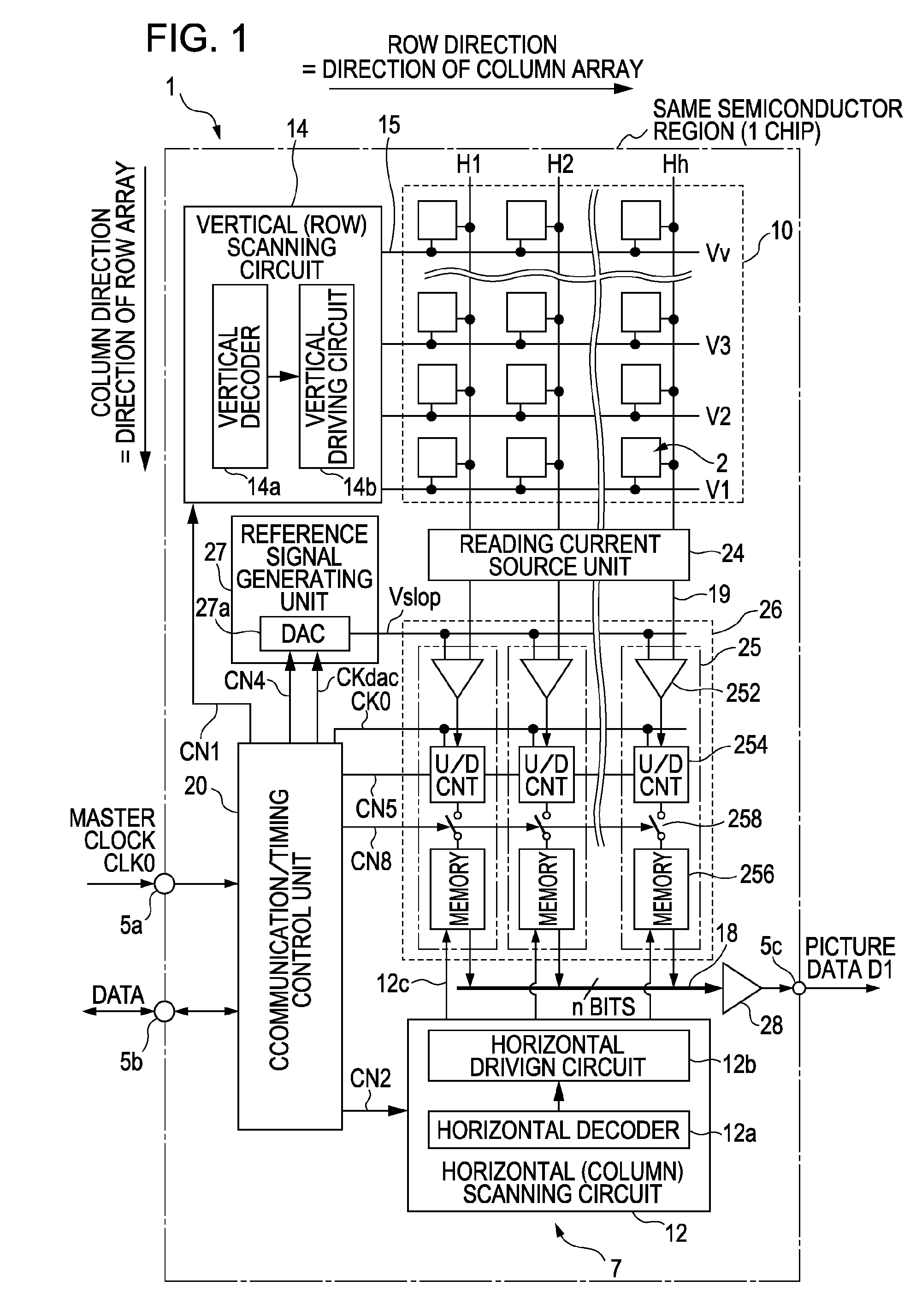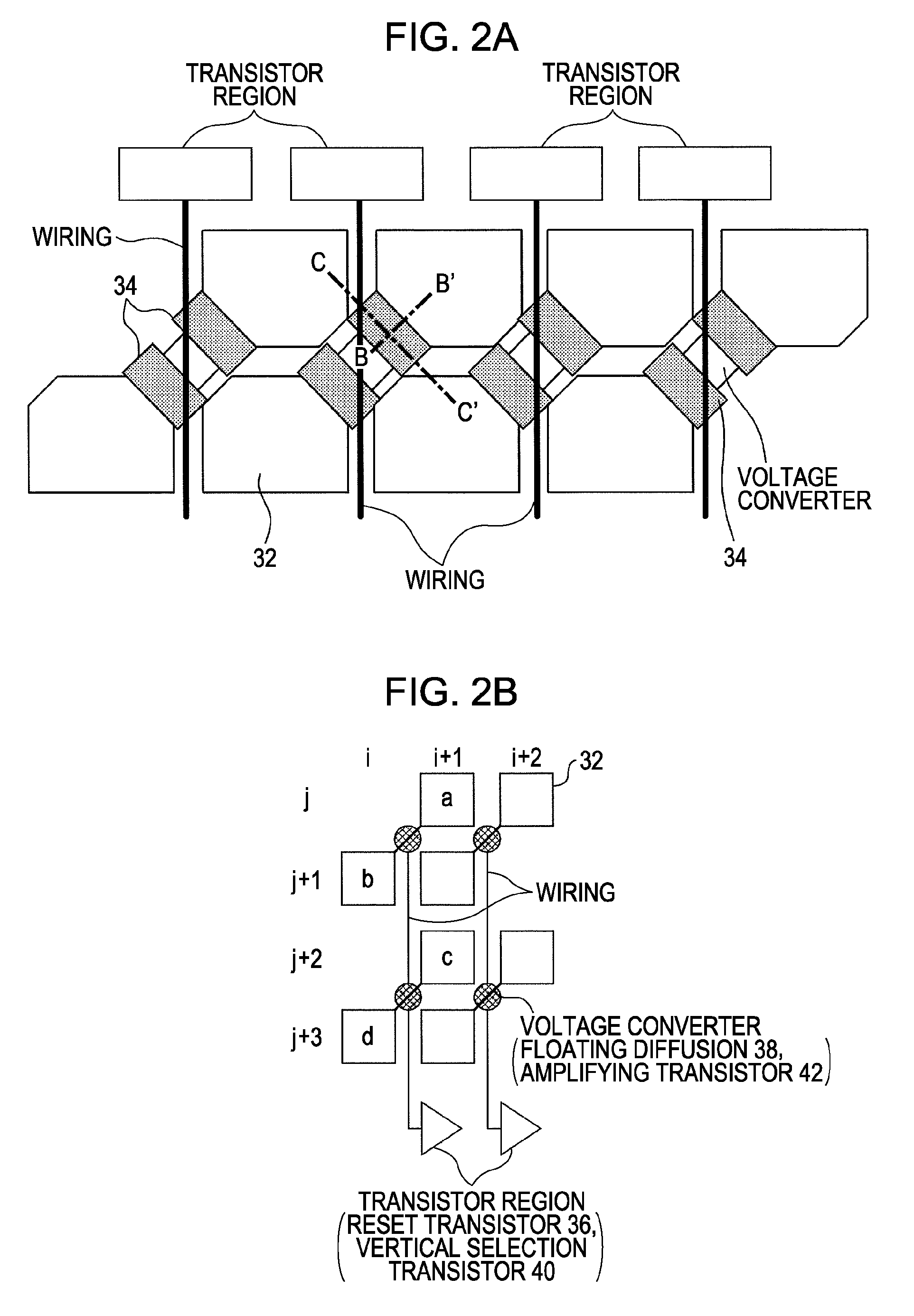Solid-state imaging device and imaging device
a technology of solid-state imaging and imaging device, which is applied in the direction of color signal processing circuit, color television details, television system, etc., can solve the problems of various problems and problems, and achieve the effect of preventing signal level variations and small negative influen
- Summary
- Abstract
- Description
- Claims
- Application Information
AI Technical Summary
Benefits of technology
Problems solved by technology
Method used
Image
Examples
Embodiment Construction
[0078]Embodiments according to the present invention will be described in detail below with reference to the diagrams. Note that an example will be described below wherein a CMOS solid-state imaging device, which is an example of a solid-state imaging device of an X-Y address form, is used as a device. Also, the CMOS solid-state imaging device is described as all pixels being formed from NMOS.
[0079]In particular, with the solid-state imaging device of the present embodiment, unit configuration elements making up a pixel array unit have a feature of having a unit pixel group of a pixel sharing configuration with a configuration, wherein a portion of the elements within the unit pixels are shared with multiple unit pixels.
[0080]However, this is only one example, and the object device is not limited to a MOS-type solid-state imaging device. All of the embodiments to be described later can be similarly applied to all semiconductor devices for physical quantity distribution detecting, wh...
PUM
 Login to View More
Login to View More Abstract
Description
Claims
Application Information
 Login to View More
Login to View More - R&D
- Intellectual Property
- Life Sciences
- Materials
- Tech Scout
- Unparalleled Data Quality
- Higher Quality Content
- 60% Fewer Hallucinations
Browse by: Latest US Patents, China's latest patents, Technical Efficacy Thesaurus, Application Domain, Technology Topic, Popular Technical Reports.
© 2025 PatSnap. All rights reserved.Legal|Privacy policy|Modern Slavery Act Transparency Statement|Sitemap|About US| Contact US: help@patsnap.com



